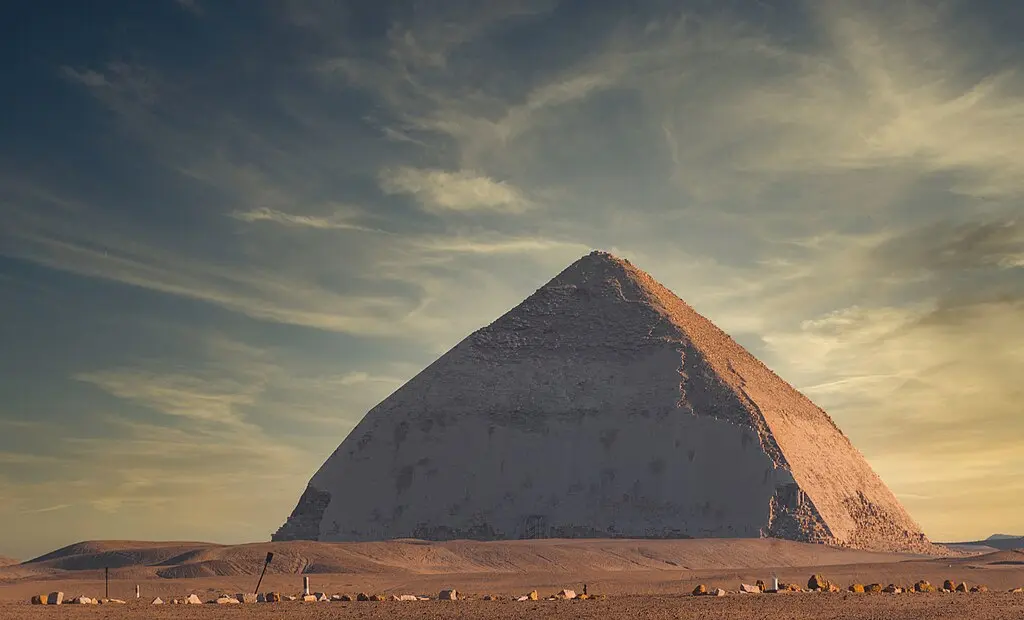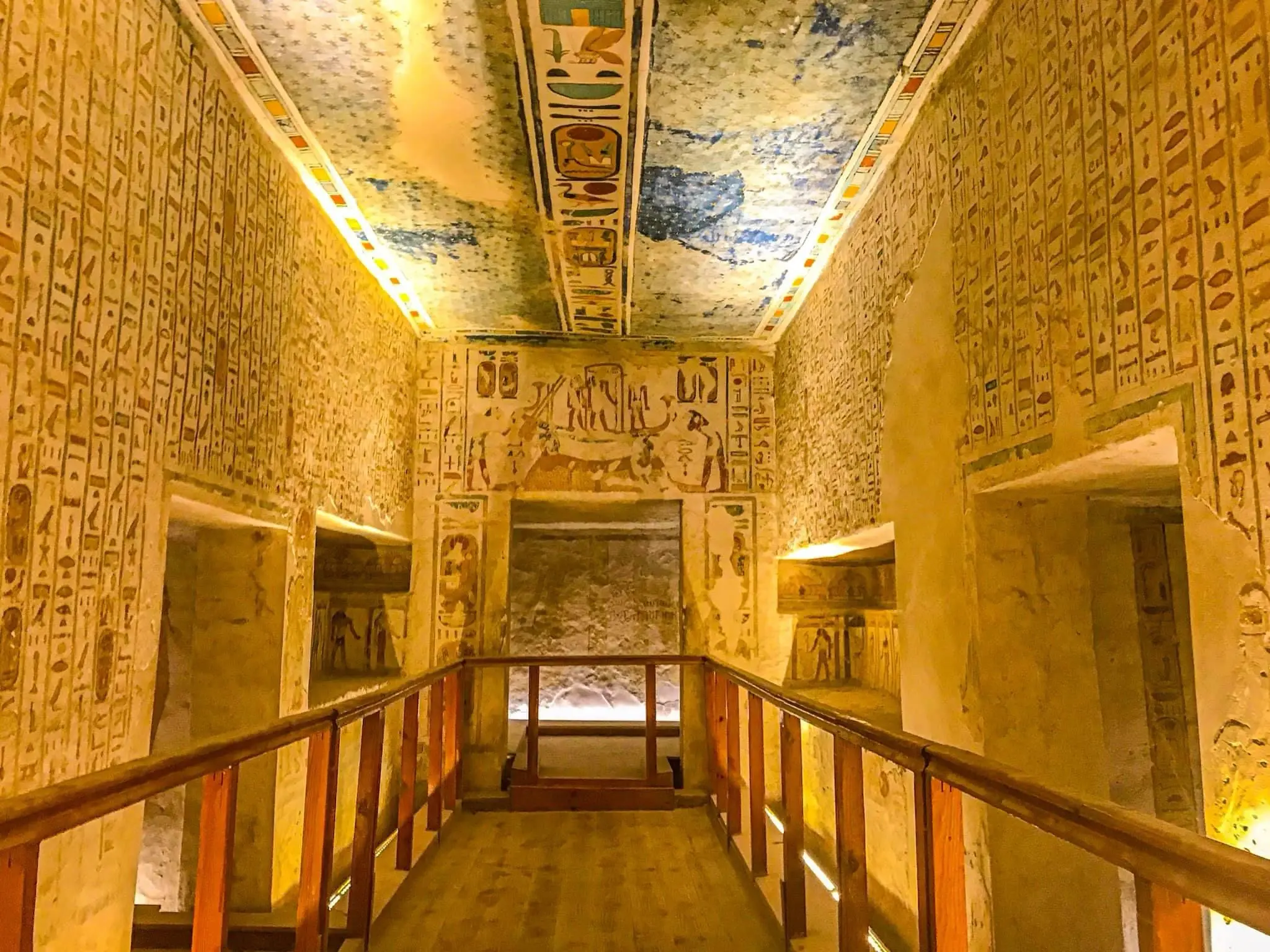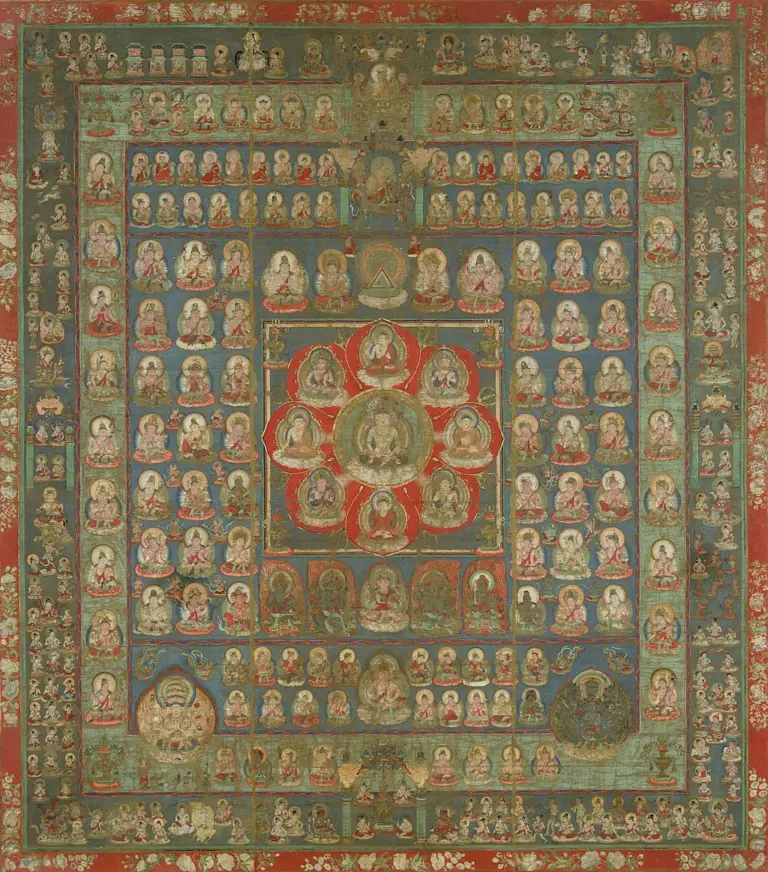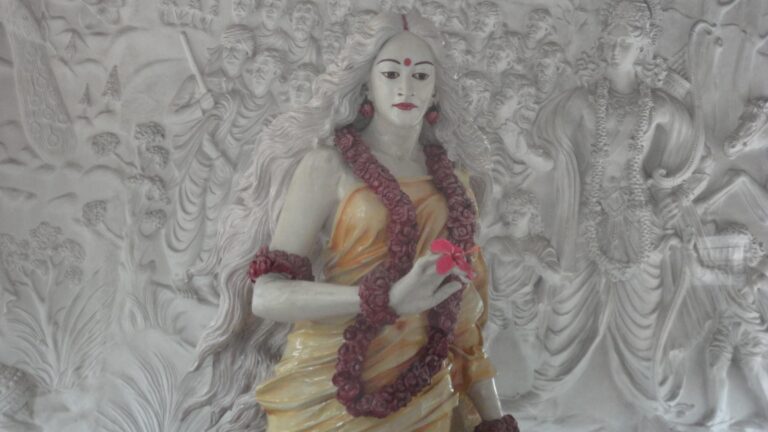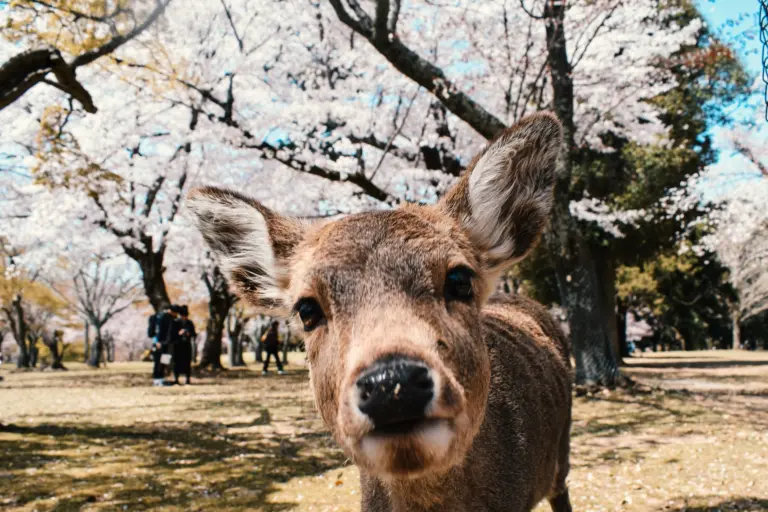Vajrayana Buddhism, often referred to as Tibetan Buddhism, stands as a distinctive path within the vast landscape of Buddhist traditions. Emerging from the spiritual milieu of Tibet, Vajrayana Buddhism weaves together the profound teachings of the Buddha with the unique spiritual heritage of the Tibetan people.
Vajrayana Buddhism is characterized by its accelerated path to enlightenment, making use of advanced meditation techniques, ritual practices, and a rich array of symbolic imagery. It integrates the foundational teachings common to all Buddhist paths while introducing unique methods that define its special approach.
This article aims to illuminate the intricate practices, philosophical depths, and cultural richness of Vajrayana Buddhism, setting it apart from its siblings, Theravada and Mahayana Buddhism (though Vajrayana is technically a part of the Mahayana tradition).
I hope you can enjoy learning about Vajrayana Buddhism, a lot of the photos in this article were taken by me during my travels in Mongolia and Nepal!
Table of Contents
Toggle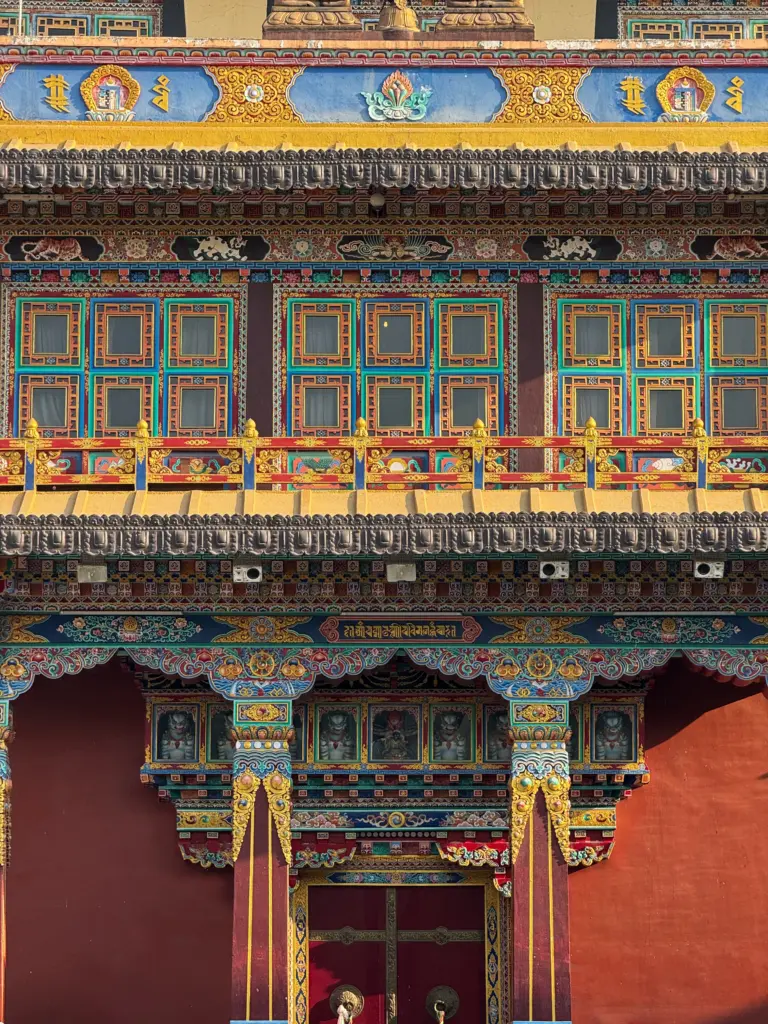
What is Vajrayana Buddhism?
Emerging in India around the 6th century CE and subsequently flourishing in Tibet, Vajrayana Buddhism is characterized by its esoteric nature, complex rituals, and advanced meditation techniques.
The essence of Vajrayana Buddhism lies in its name: “Vajra,” a Sanskrit word meaning both thunderbolt and diamond, symbolizes the indestructible nature of truth, while “Yana” means vehicle.
This “Diamond Vehicle” suggests a method of spiritual practice that is both powerful and direct. Unlike Theravada and Mahayana Buddhism, which often emphasize gradual paths to enlightenment, Vajrayana Buddhism proposes a more accelerated approach, with the potential for achieving enlightenment in a single lifetime.
Central to Vajrayana practice are tantric teachings. These teachings, often shrouded in secrecy, include a variety of rituals, meditation practices, and the use of mantras. Tantric Buddhism is notable for its extensive use of symbolic imagery, such as mandalas, mudras, and thangkas. These serve not just as visual aids but as profound tools to guide spiritual realization.
Vajrayana also incorporates the Mahayana philosophy of the Bodhisattva — the ideal of achieving enlightenment for the sake of all beings. However, it supplements this with unique practices aimed at harnessing and transforming the energy of both the body and the mind to achieve enlightenment more rapidly.
Additionally, Vajrayana Buddhism is deeply intertwined with the cultural traditions of Tibet. As it spread to Tibet, it absorbed elements of the indigenous Bon religion, further enriching its worldviews. This fusion resulted in a unique form of Buddhism that is as much a cultural expression as it is a religious path.
Who are the Central Figures in Vajrayana Buddhism?

Historical Figures
- Gautama Buddha: As in all branches of Buddhism, Siddhartha Gautama, the Buddha, is the foundational figure. His teachings form the core of Vajrayana Buddhism.
- Padmasambhava (Guru Rinpoche): He is a seminal figure in Tibetan Buddhism, credited with bringing Buddhism to Tibet in the 8th century. Padmasambhava is revered as a second Buddha and is central to many Vajrayana practices and teachings.
- Dalai Lama: The Dalai Lama is a key spiritual leader in Tibetan Buddhism. Though specific to the Gelug school, the influence and teachings of the Dalai Lama are revered across different Vajrayana traditions.
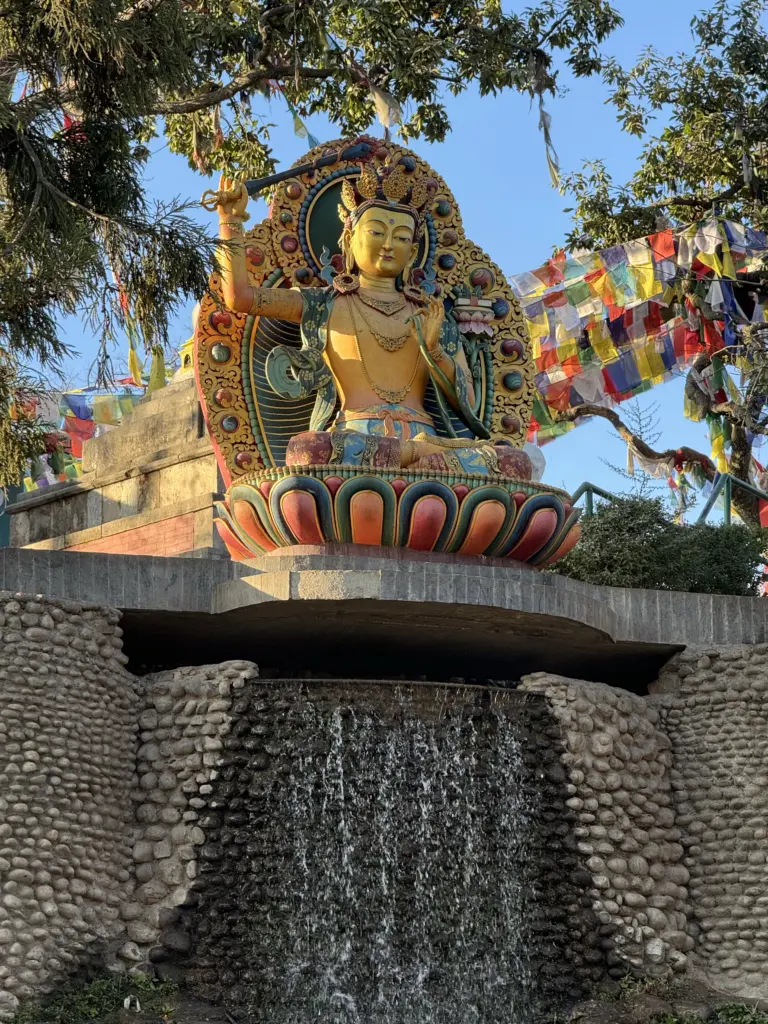
Bodhisattvas
- Avalokiteshvara: The Bodhisattva of compassion, Avalokiteshvara, holds a special place in Vajrayana. He is considered the patron deity of Tibet and is often associated with the Dalai Lama.
- Tara: A female Buddha and a major figure in Vajrayana, Tara is known for her compassion and her role as a protector. She manifests in various forms, such as Green Tara and White Tara.
- Manjushri: The Bodhisattva of wisdom, Manjushri is invoked for his ability to cut through ignorance and is often depicted wielding a flaming sword.
- Vajrasattva: Embodying the principle of purity and enlightenment. Vajrasattva is often depicted in Buddhist art holding a vajra (thunderbolt) and bell, symbolizing wisdom and compassion.

What are the Sacred Texts of Vajrayana Buddhism?
Vajrayana Buddhism does not rely on a single sacred text, but rather a vast collection of writings. The primary texts of Vajrayana are found within the broader Buddhist canon, but it also includes a significant number of tantric texts that are specific to this tradition. Key among them are:
The Tibetan Buddhist Canon: This is divided into two main sections:
- The Kangyur: These are the translated words of the Buddha, including sutras (discourses of the Buddha) and tantras.
- The Tengyur: This collection consists of commentaries, treatises, and expositions by Indian and Tibetan Buddhist masters. It provides essential interpretations and elucidations of the teachings in the Kangyur.
The Tibetan Book of the Dead (Bardo Thodol): While not a central text in the same way as the Kangyur and Tengyur, the “Tibetan Book of the Dead” is well-known and widely studied in Vajrayana Buddhism. It provides detailed descriptions of the stages of death and afterlife, offering guidance for navigating these stages.
Texts by Important Vajrayana Masters: Writings by influential figures like Padmasambhava, Tsongkhapa, Milarepa, and various Dalai Lamas are highly regarded. These works often include spiritual songs, instructional texts, and commentaries on tantric practices.
Terma Literature: Unique to Tibetan Buddhism are the Termas, or “hidden treasures,” texts that were supposedly hidden by Padmasambhava and other masters, to be discovered by future Tertons (treasure revealers) at the appropriate time for their teachings to be beneficial.
What are the Core Beliefs of Vajrayana Buddhism?
The Four Noble Truths
The Four Noble Truths are the foundational teachings of Buddhism, and Vajrayana Buddhism embraces them as the starting point of its philosophical journey. These truths form the basis for understanding the nature of existence and the path to liberation.
The Truth of Suffering (Dukkha): This first truth asserts that suffering is an inherent part of existence. In Vajrayana, as in all Buddhist traditions, it is recognized that life in its conventional state is marked by suffering. This suffering is not just physical pain but includes a broad range of dissatisfactions and discomforts that arise from our attachments and desires.
The Truth of the Cause of Suffering (Samudaya): The second truth identifies desire or attachment as the primary cause of suffering. Vajrayana Buddhism delves deeply into the psychology of aversion, attachment, and ignorance: the Three Poisons. It teaches that ignorance about the nature of reality leads to craving and clinging, which in turn leads to suffering.
The Truth of the Cessation of Suffering (Nirodha): This truth offers hope: suffering can cease. It’s possible to liberate oneself from the cycle of suffering and attain a state of peace and enlightenment. In Vajrayana, this is not just a theoretical possibility but a practical reality achievable in one’s lifetime.
The Truth of the Path to the Cessation of Suffering (Magga): The final truth outlines the path to the cessation of suffering, known as the Noble Eightfold Path.
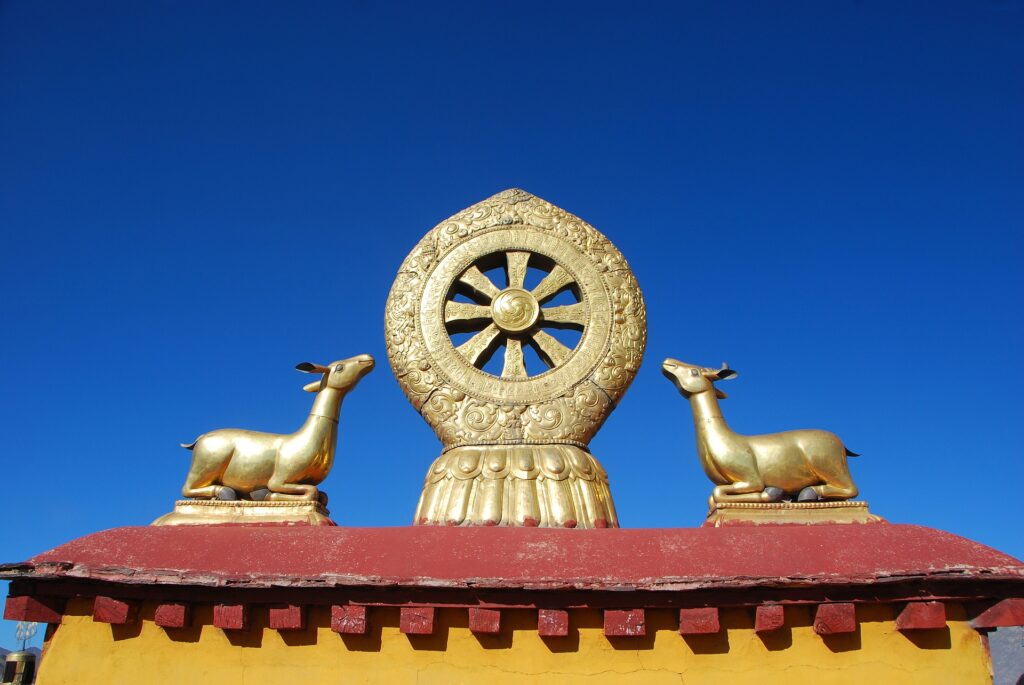
The Noble Eightfold Path
The Noble Eightfold Path is a guide to ethical and mental development with the goal of freeing the individual from attachments and delusions; it ultimately leads to understanding the truth about all things. In Vajrayana Buddhism, this path is not only embraced but is also enhanced through Vajrayana’s unique practices.
Right Understanding (Samma-ditthi): This involves the correct understanding of the nature of reality, particularly the Four Noble Truths.
Right Intention (Samma-sankappa): This step focuses on cultivating the right attitudes—non-greed, non-hatred, and non-delusion: the Three Antidotes, so to speak.
Right Speech (Samma-vaca): This involves speaking truthfully, harmoniously, and kindly.
Right Action (Samma-kammanta): This includes acting in ways that are not harmful to others. Vajrayana practice involves not only physical actions but also symbolic actions that embody deep spiritual truths.
Right Livelihood (Samma-ajiva): This entails earning a living in a way that does not harm others and is ethically sound.
Right Effort (Samma-vayama): This is about cultivating positive states of mind and avoiding negative ones.
Right Mindfulness (Samma-sati): This involves maintaining awareness.
Right Concentration (Samma-samadhi): This is the development of deep states of meditative absorption.

Pratityasamutpada
Pratītyasamutpada, or dependent origination, is a foundational concept in Vajrayana Buddhism, as it is in all Buddhist traditions. It posits that all phenomena arise and cease through their dependence on causes and conditions.
At the heart of pratityasamutpada is the idea of interconnectedness and interdependence of all phenomena. Everything is viewed as part of a vast, intricate web of relationships, with no phenomenon existing in isolation or having an independent, self-contained existence.
This understanding is closely tied to the Vajrayana perspective on emptiness (Sunyata), where phenomena are seen as empty of inherent existence.
Sunyata
Sunyata, or emptiness, is a central concept in Vajrayana Buddhism, inheriting its significance from Mahayana Buddhist philosophy.
Sunyata refers to the understanding that all phenomena are devoid of an inherent, independent essence. This does not mean that things do not exist, but rather that they do not exist in the way we habitually think they do. Everything is seen as empty of an independent self-nature and exists only in dependence on a web of interrelated factors.
In Vajrayana, the realization of emptiness is crucial for spiritual liberation. This realization leads to the understanding that the distinctions we make between self and other, subject and object, are fundamentally illusory.
By grasping onto these illusions as real, we create suffering for ourselves. Therefore, understanding emptiness helps dissolve these false distinctions, leading to a release from suffering and the cycles of samsara and achieving Nirvana.
What are the Core Principles of Vajrayana Buddhism?
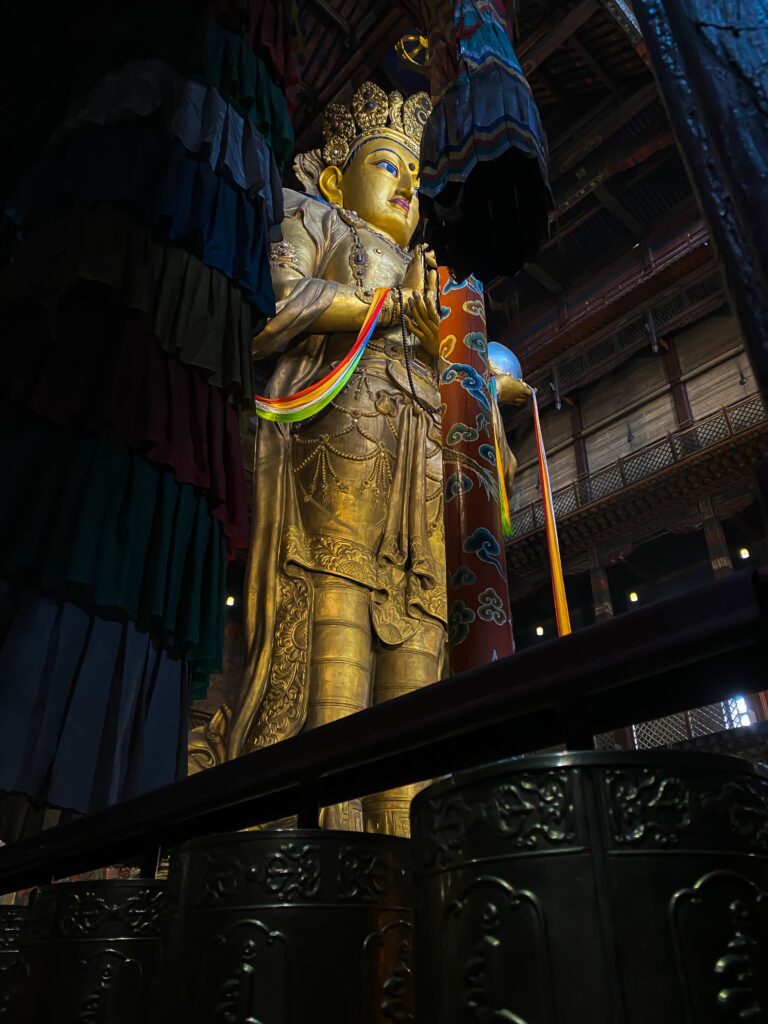
The Bodhisattva Ideal
The Bodhisattva Ideal represents a profound commitment to achieving enlightenment not solely for personal liberation, but for the benefit of all sentient beings. This concept is pivotal in Mahayana Buddhism and is deeply integrated into the Vajrayana path.
In Vajrayana, a Bodhisattva is seen as an individual who, driven by deep compassion (Karuna) and armed with profound wisdom (Prajna), strives to understand the true nature of suffering and seeks to alleviate it for all beings. This journey is marked by a unique combination of compassionate action and insightful understanding.

Union of Dualities
The concept of the union of dualities plays another central role, reflecting a profound understanding of the non-dual nature of reality.
This principle is often symbolized by the image of Yab-Yum, representing a male deity in union with his female consort which always surprises a lot of people who are unfamiliar with this sort of imagery as the tendency is to see it as something sexual.
However, this iconic representation is deeply symbolic, with “Yab” (father) signifying compassion, and “Yum” (mother) symbolizing wisdom. Their union epitomizes the inseparability of wisdom and compassion, or emptiness and bliss, underscoring the idea that these qualities are not separate but are aspects of a unified truth.
This union of dualities challenges conventional dualistic thinking, such as the distinctions between good and bad, sacred and profane, or physical and spiritual. It suggests that these dichotomies are ultimately artificial, and a deeper understanding transcends these distinctions.
The Role of the Guru
The role of the guru in Vajrayana Buddhism is of paramount importance and is markedly distinct from the teacher-student relationships in many other spiritual traditions.
In Vajrayana, the guru is not just a teacher but is often regarded as the embodiment of spiritual truth and enlightenment. The relationship between a guru and a disciple is deeply personal and spiritual, forming the cornerstone of the practitioner’s spiritual journey.
The guru is seen as a vital link to the lineage of teachings and transmissions. The teachings of Vajrayana are often esoteric, and the guidance of an experienced guru is essential for correct understanding and practice. The guru imparts not only intellectual knowledge but also spiritual insights and blessings, which are considered indispensable for progress on the path to enlightenment.
The relationship with the guru is also a practice of devotion and surrender, which are key aspects in Vajrayana Buddhism. Through devotion to the guru, disciples learn to dissolve their ego and pride, opening themselves to deeper spiritual transformations. The surrender is not blind but is based on genuine trust and understanding.
Receiving empowerment from a guru is a very significant event. These empowerments are ceremonies where the guru transmits spiritual energy and permission to engage in certain practices. This transmission is considered a powerful catalyst for spiritual growth and is unique to Vajrayana Buddhism.

What are the Practices of Vajrayana Buddhism?
Vajrayana Buddhism is known for its diverse and intricate practices that distinguish it from other Buddhist traditions. These practices are designed to rapidly advance a practitioner towards enlightenment, integrating both the mundane and the spiritual aspects of life. Key practices in Vajrayana Buddhism include:
-
Meditation: While meditation is common across all Buddhist schools, Vajrayana employs advanced techniques like Deity Yoga, a special kind of yoga where practitioners visualize themselves as a deity, and Tummo, or inner fire meditation, which involves harnessing inner energies.
-
Mantras: Mantras are sacred syllables. These are believed to have spiritual power and help in focusing the mind and cultivating certain qualities.
-
Dzogchen and Mahamudra: These are advanced meditative practices aimed at experiencing the true nature of reality directly. They emphasize the natural, uncontrived state of mind, beyond conceptual elaboration.
-
Lojong and Mind Training: These practices involve cultivating attitudes such as compassion and patience and transforming adverse conditions into the path of enlightenment.
-
Energy Work: Vajrayana includes practices that work with the body’s subtle energy systems, involving chakras, meridians, pranas, and bindus. These practices are aimed at achieving spiritual realization through the transformation of physical and mental energies.
-
Chod: This involves visualizing the offering of one’s body to demons and other beings as a means of cutting through ego-attachment and cultivating generosity and compassion.
-
Pujas: Regular pujas (worship rituals) and making offerings are part of Vajrayana practice, serving as expressions of devotion and means of accumulating merit.
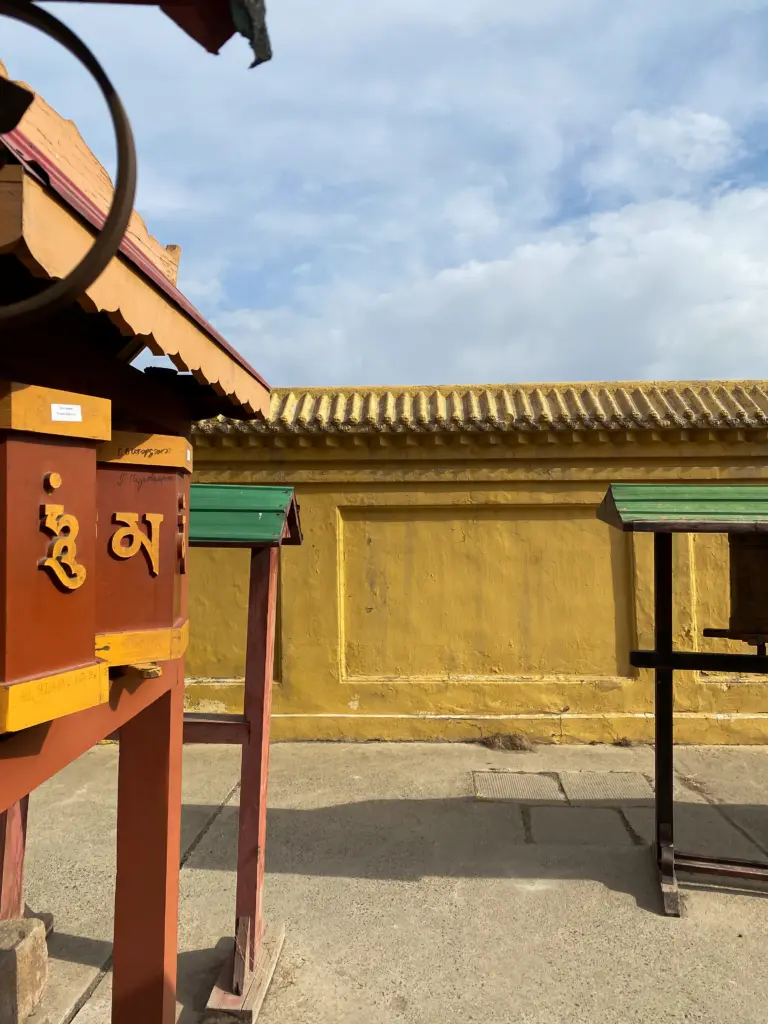
Vajrayana Buddhism by Country
While Vajrayana Buddhism has its roots in Tibet, it has spread to various countries around the world, each adopting unique characteristics influenced by their cultural and historical contexts. Here’s an overview of Vajrayana Buddhism in some key countries:
-
Tibet: The heartland of Vajrayana Buddhism, its practices and teachings have been central to Tibetan culture and society for centuries. Tibetan Buddhism integrates the indigenous Bon religion and has evolved into various schools, such as Nyingma, Kagyu, Sakya, and Gelug.
-
Bhutan: Vajrayana Buddhism is the state religion of Bhutan and is integral to its national identity. The form of Buddhism practiced here is closely related to the Nyingma and Kagyu traditions of Tibetan Buddhism.
-
Mongolia: After being introduced in the 13th century, Tibetan Buddhism became deeply entrenched in Mongolian culture (See also: Erdene Zuu Monastery). It underwent a revival after the fall of communism in the 1990s and remains a significant spiritual and cultural force.
-
Nepal: Home to a significant Tibetan refugee population, Nepal has a rich tradition of Vajrayana Buddhism, particularly in the Kathmandu Valley. It coexists with other forms of Buddhism and Hinduism, creating a unique religious landscape.
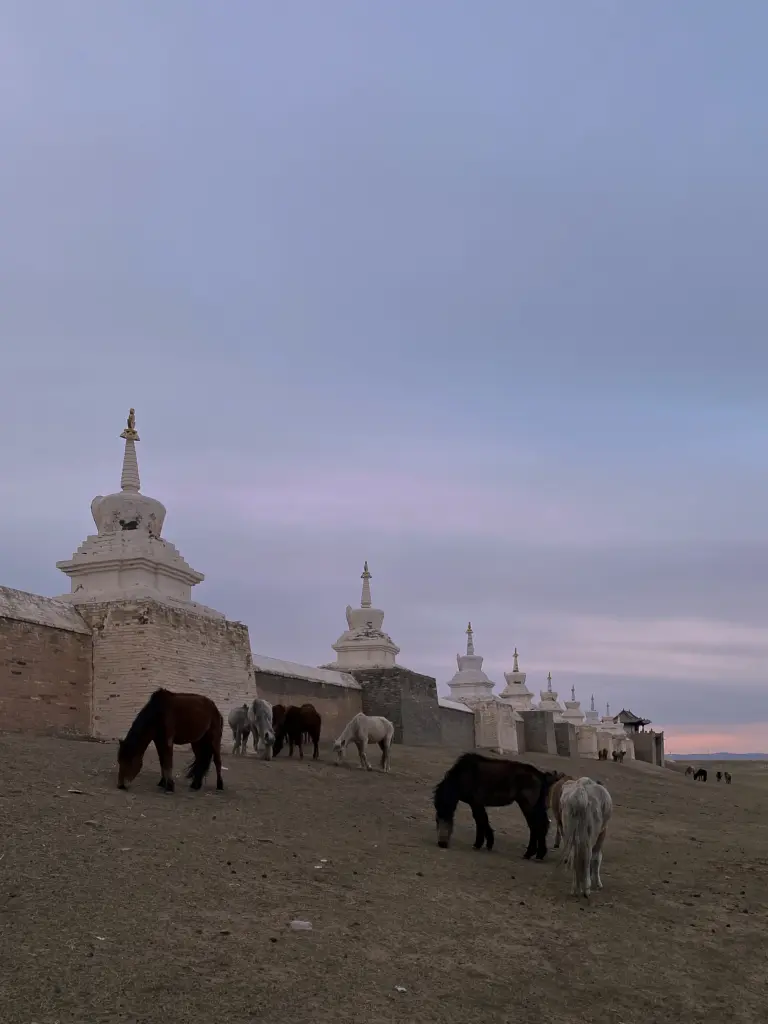
-
India: The birthplace of Buddhism, India has significant Tibetan Buddhist centers, especially in regions like Ladakh, Sikkim, and Dharamshala—the home of the Dalai Lama in exile. These communities are vital for preserving Tibetan Buddhist traditions.
-
Russia (Siberia and Far East): In Russia, regions like Buryatia, Kalmykia, and Tuva, Tibetan Buddhism has a historical presence and has seen a resurgence in interest and practice since the late 20th century.
-
China: In China, regions with ethnic Tibetan populations, such as the Tibet Autonomous Region and parts of Qinghai, Sichuan, Gansu, and Yunnan provinces, Vajrayana Buddhism is practiced. However, religious activities here are subject to state control.
-
Japan: While primarily known for Zen and Pure Land Buddhism, Japan also has a small but significant presence of Vajrayana Buddhism, mainly due to historical and cultural exchanges with China and Tibet.
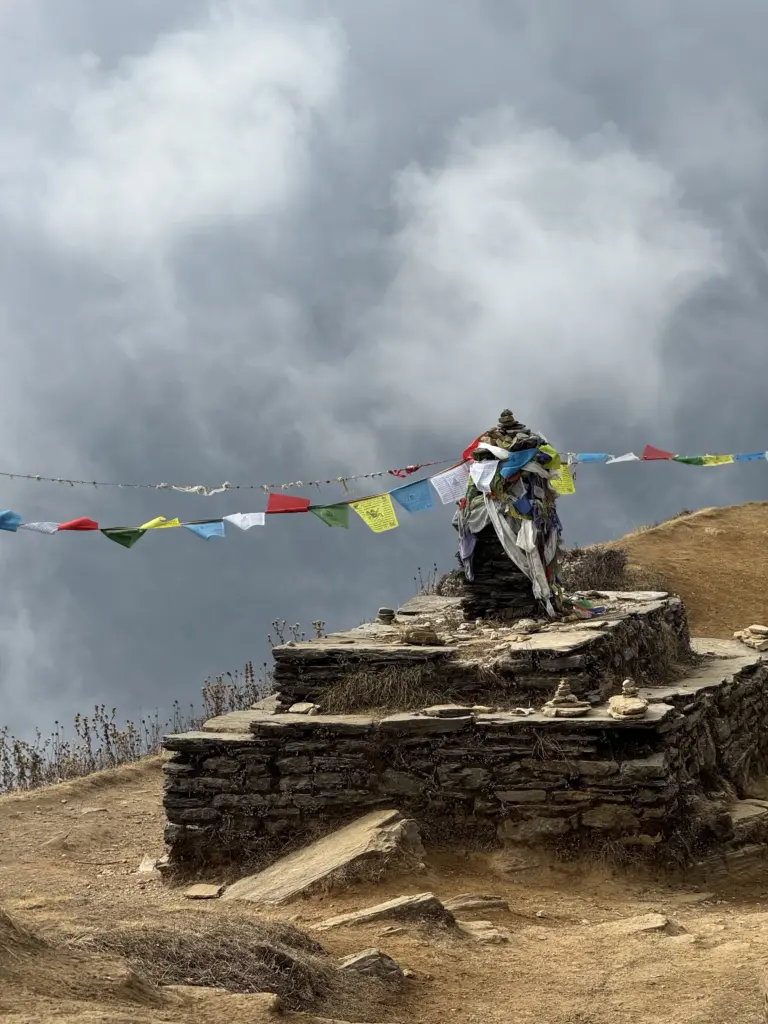
What are the Customs of Vajrayana Buddhism?
Vajrayana Buddhism is rich in symbolic and meaningful customs, and some of the most prominent include:
- Prayer Flags: Prayer flags are colorful rectangular cloths, often found strung along mountain ridges and peaks high in the Himalayas. They are inscribed with mantras, prayers, and images of deities. It’s believed that as the wind blows through the flags, it carries the prayers and mantras to all beings. Prayer flags symbolize the spread of compassion, good will, and blessings.
- Thangka: Thangka paintings are intricate and colorful paintings on fabric that depict Buddhist deities, scenes, or mandalas. They are not just art; they serve as important aids in meditation and teaching. Thangkas are believed to emanate spiritual power and are used in personal devotion and during important rituals. Creating a Thangka involves skillful artistry and is often seen as a meditative practice in itself.
- Mandala: A mandala is a symbolic representation of the universe, often depicted as a complex, geometric pattern. Mandalas can be created with colored sand, painted, or even visualized in meditation. They are used as meditation aids, helping to focus the mind and symbolically expressing the impermanence of life (especially sand mandalas, which are destroyed after completion). Mandalas also represent the journey from the outer world to inner enlightenment.

- Prayer Wheels: Prayer wheels are cylindrical wheels that contain rolls of paper inscribed with mantras. Spinning a prayer wheel is believed to have the same spiritual benefits as orally reciting the prayers. As the wheel spins, it is thought to spread spiritual blessings. Prayer wheels come in various sizes; they can be handheld or installed in temples.
- Pilgrimages: Pilgrimages involve visiting sacred sites that are significant in Buddhist history or mythology. These sites could be places where important lamas were born, enlightened, taught, or passed away. Pilgrimages are seen as a way to accumulate merit, purify negativities, and deepen one’s spiritual practice. They are often undertaken with an attitude of reverence, devotion, and contemplation.


